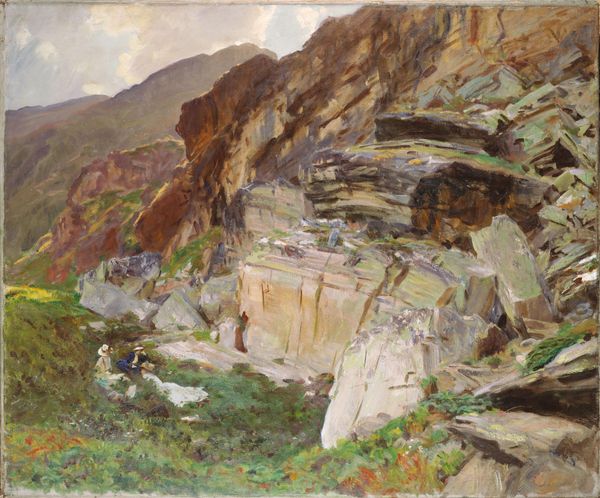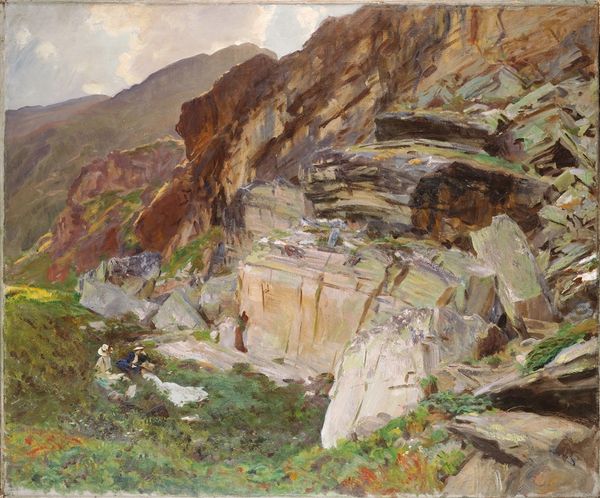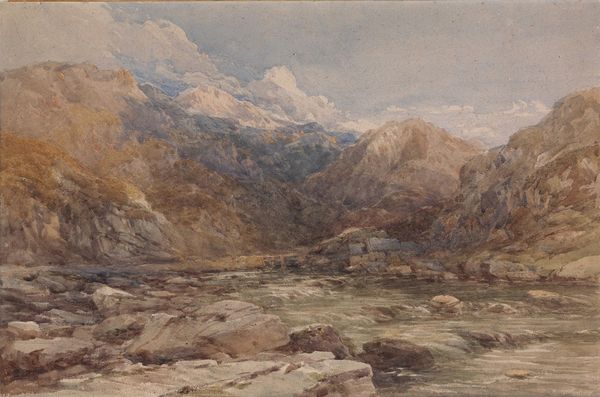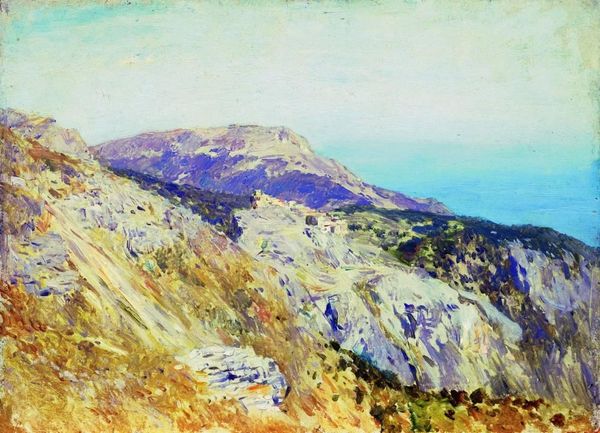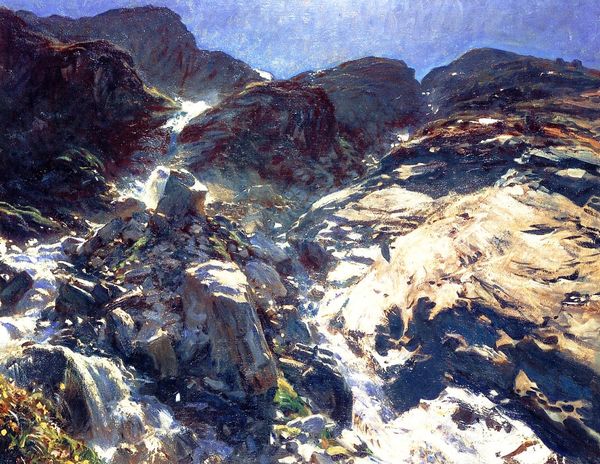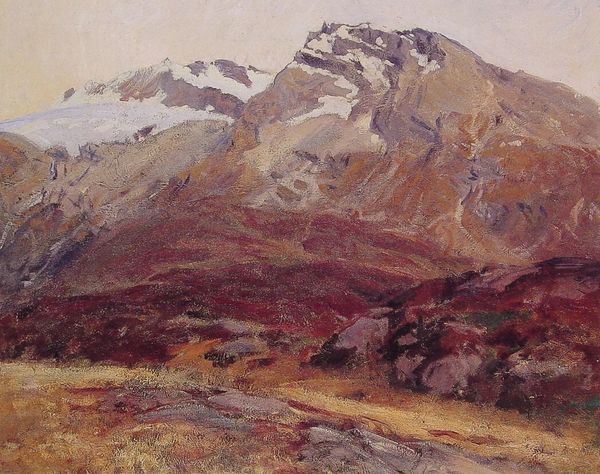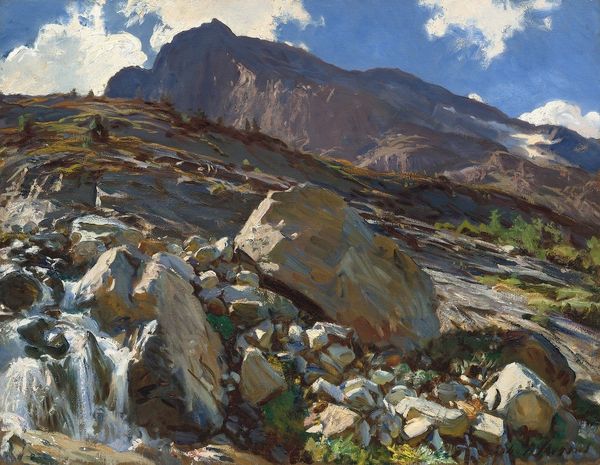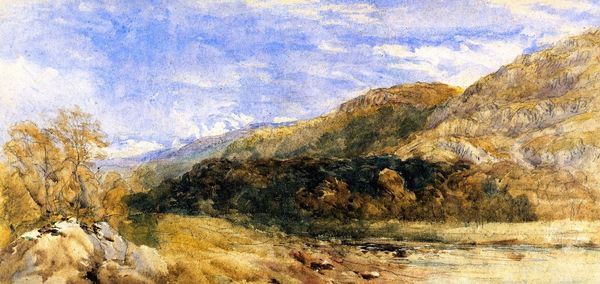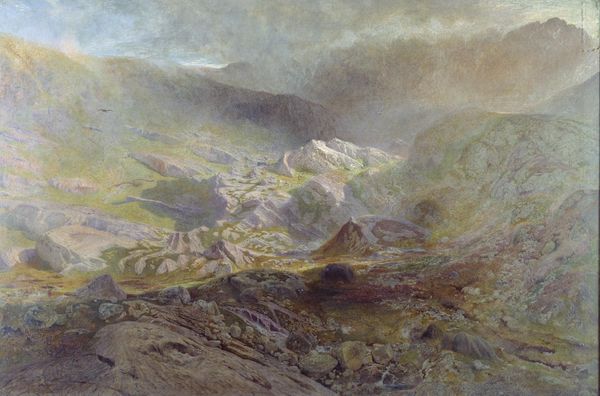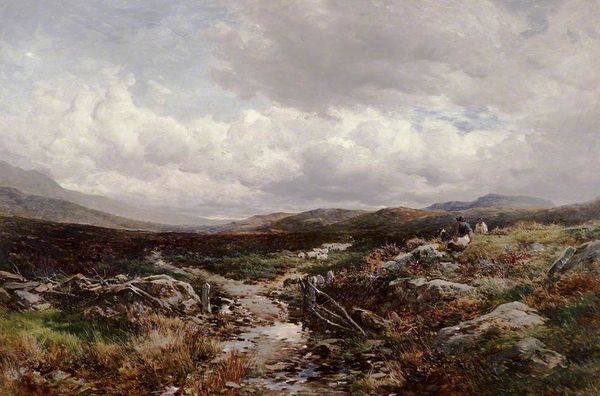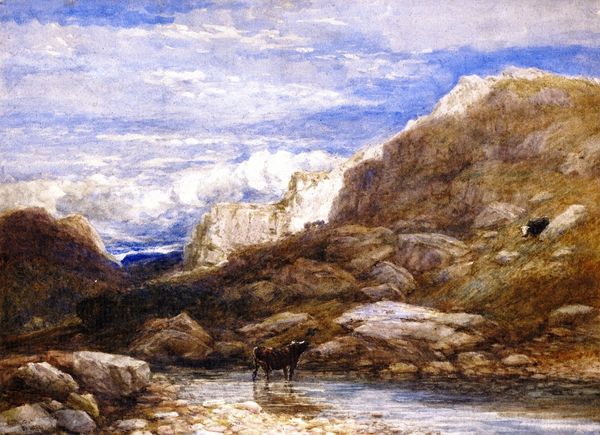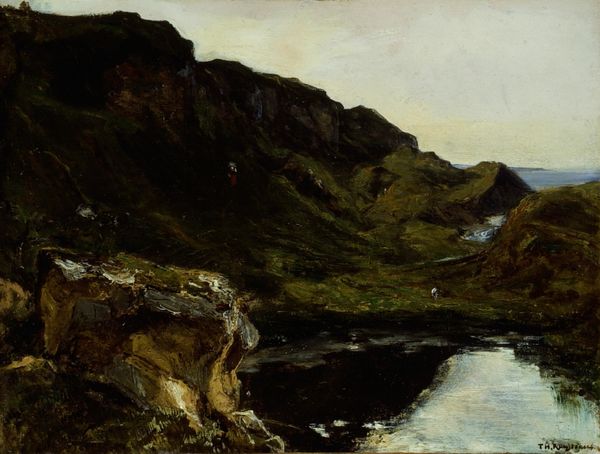
plein-air, watercolor
#
plein-air
#
landscape
#
watercolor
#
rock
#
romanticism
#
mountain
#
watercolor
#
realism
Copyright: Public domain
Curator: Looking at this work, "View near Bettws-y-Coed," created in 1846 by David Cox, I'm immediately struck by how incredibly alive it feels. It seems Cox truly captured the essence of that Welsh landscape. Editor: Absolutely! There's an undeniable dynamism to it. My initial impression is of rugged textures and powerful earth tones—it feels quite elemental, almost a visceral engagement with the landscape. Curator: Exactly. Cox was deeply involved in the changing perception of landscape in the 19th century. The rise of industrialization fostered a desire to reconnect with untouched nature. Think about how urbanization affected different social strata. For whom was this natural idyll a refuge, and whom did it exclude? Editor: A potent question. Considering this work in the context of British Romanticism, we can see a burgeoning desire to legitimize national identity through landscapes and images of "wild" terrain. Did this aesthetic serve as an indirect support to existing British land ownership at the expense of local claims? Curator: I agree. These paintings served as both records and powerful constructions, especially given Britain's project of environmental exploitation throughout the British Isles at the time, let alone elsewhere in the British Empire. This painting shows nature as it should be, masking contemporary injustices in idyllic art. Editor: And we see that reflected in the institutional collecting of these works, shaping perceptions of artistic value tied to social privilege. The narratives galleries build and display directly intersect with land management, power structures and contemporary ideas. Curator: Indeed. Thinking about its materiality—it's watercolor, an interesting medium given its association with both delicacy and expressive freedom. Here, he uses it to build up a palpable sense of ruggedness, challenging our expectations. Editor: This conversation underscores how artistic landscapes often operate as more than just scenic views; they actively participate in broader sociopolitical contexts, revealing how identity, power, and landscape entwine. Curator: By diving into its cultural context, hopefully, we can approach this work with a wider critical awareness.
Comments
No comments
Be the first to comment and join the conversation on the ultimate creative platform.
